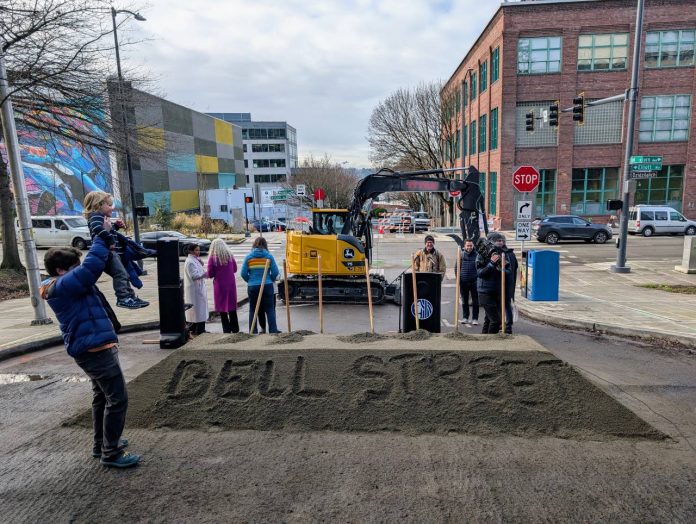
Last Tuesday, Seattle officials celebrated the start of work to overhaul Bell Street on the two blocks near the waterfront, adding a protected bike lane and streetscape improvements.
Mayor Bruce Harrell, District 7 Councilmember Bob Kettle, and Office of the Waterfront director Angela Brady were on hand to deliver speeches commemorating the latest upgrade in and around Seattle’s 20-acre Waterfront Park moving forward. The group scooped a golden shovelful of ceremonial dirt to officially begin the street overhaul work. Bell Street is the final connection intended to improve east-west access to the waterfront to start construction.
In his speech, Harrell waxed poetic about the significance of Belltown’s bike and pedestrian connection to the waterfront, quoting a renowned urbanist thinker.
“Cultures and climates differ all over the world, but people are the same. They’ll gather in public and give them a good place to do it. That’s from a Danish architect and urban design consultant, Jan Gehl, and I believe that in terms of how we’re trying to recreate this area in other parts of the city,” Harrell said. “So that’s what we’re celebrating here today, our commitment to create a downtown and a waterfront that is a good place for residents and visitors and workers to gather shop and live.”
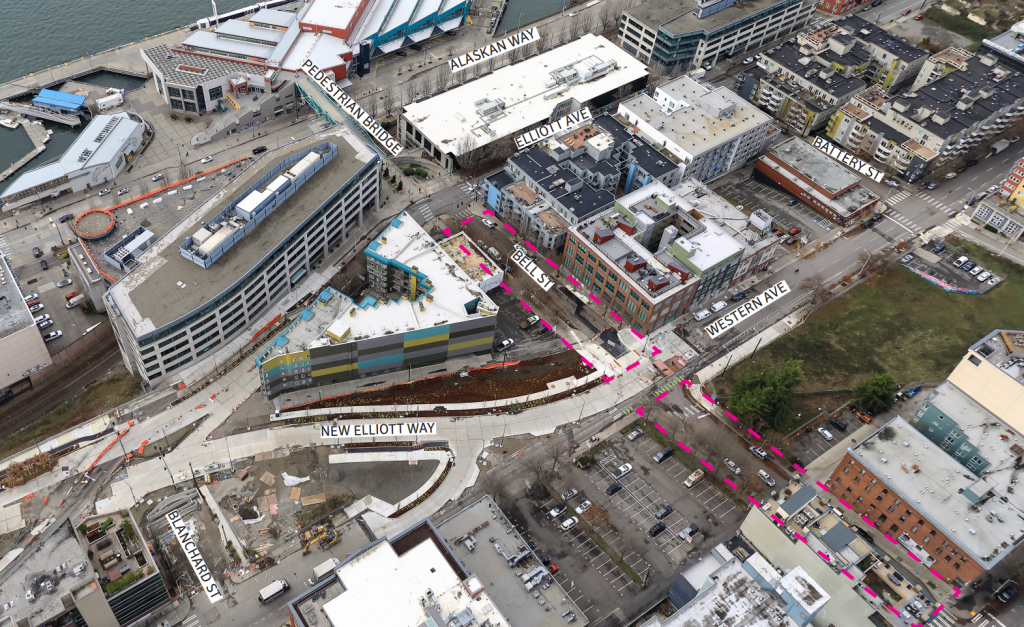
Of the $806 million being invested in the total Waterfront Park project, $5.2 million is supporting the Bell Street Improvement Project, the City noted, adding that the bike and pedestrian-minded overhaul would create “creating a more active, green and safe space” in the process. However, the bike facility ends at First Avenue, before people biking can connect to the protected bike lane on Second Avenue — one of the main arteries in Seattle’s downtown bike network.
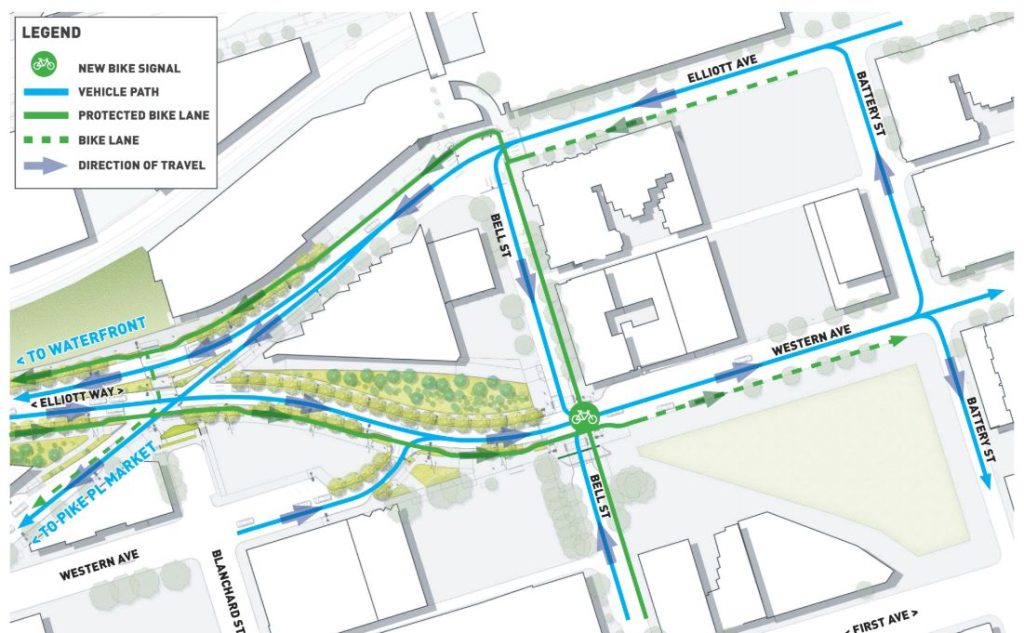
Pedestrian improvements and new landscaping will improve the streetscape.
“We’re adding seating to provide moments of pause on this steep hill, if you haven’t experienced it for yourselves yet, from this vantage point, there are stunning views of Elliott Bay, Mount Rainier, and the new waterfront park,” Brady said. “We’re also planting native shrubs and grasses to add to the beauty of the area and create a more pleasant pedestrian experience, something I know many people in Belltown, including myself, are particularly excited about.”
Councilmember Kettle noted that Bell Street is part of the Market to MOHAI Trail, a interpretive path with various plaques and points of interest on the way from Pike Place Market to the Museum of History and Industry (MOHAI) on the southern shores of Lake Union. While billed as one of Seattle’s premier pedestrian corridors, no section of the trail is fully pedestrianized and closed to cars. The new improvements to Bell Street between First and Elliott Avenues will continue that trend.
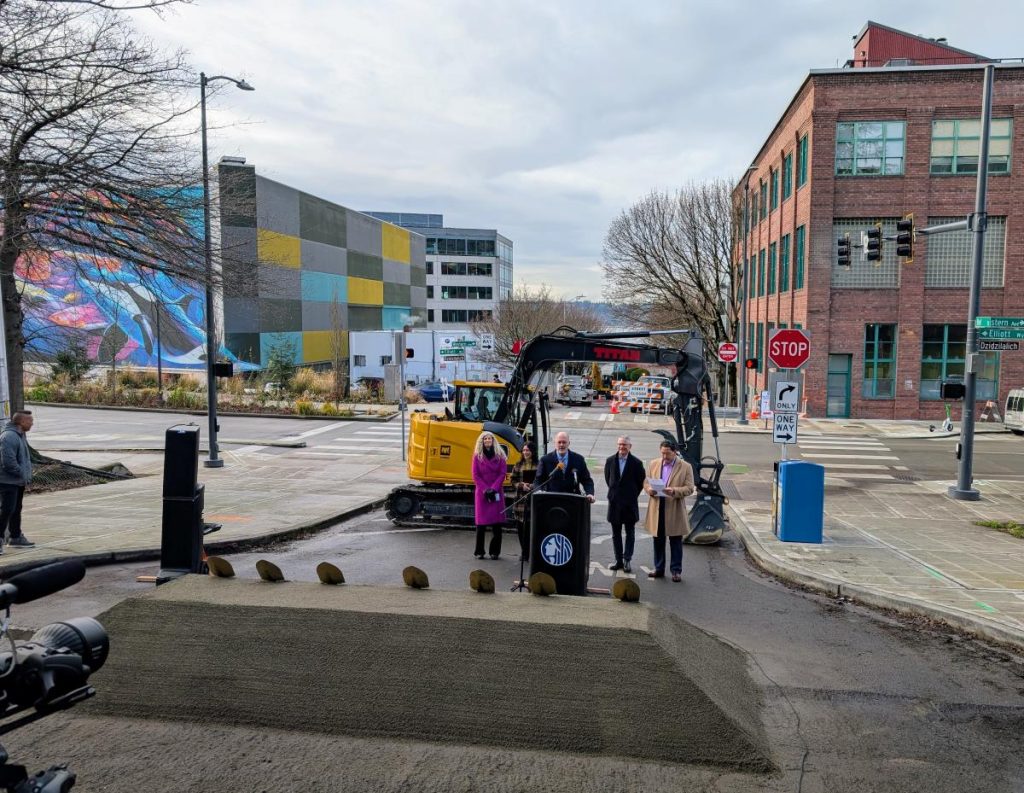
Bell Street north of First Avenue was already redesigned as a sort of “people street,” with cars deemphasized (but not fully prohibited) and a protected bike lane from Fifth Avenue to Denny Way.
Despite a fully pedestrianized option being highly popular during the City’s public outreach, the Harrell Administration opted to with a design that maintains one lane of car traffic in the overhauled street near the waterfront as well as on-street parking. Still, the connection is billed as part of the gateway to Belltown, which will only achieve greater emphasis with the completion of Portal Park, a park space reclaimed from on-ramps to the Alaskan Way Viaduct, a double-decker highway which was removed in 2019, advancing the waterfront makeover to take advantage of the freed-up space.
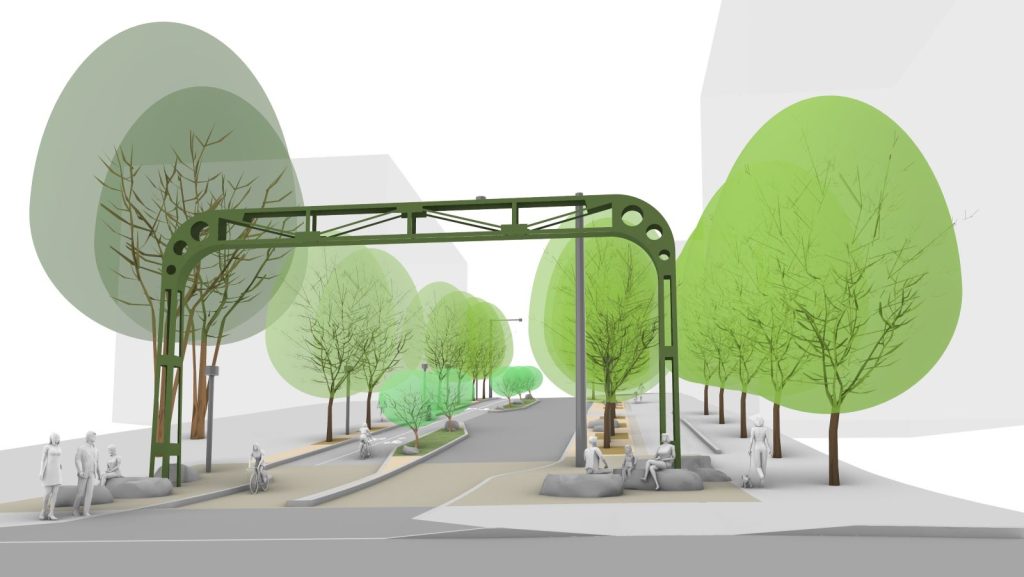
Brady highlighted that the former SR 99 viaduct sign bridge that SDOT will be incorporating into the redesigned Belltown as part of the improvement project. “The city will restore the original sign bridge with new lighting, reinstall it in a prominent location in Belltown to arch over Bell Street, just east of Western Avenue, serving as a new gateway to the neighborhood,” the Harrell press release noted.
Presenters are also teasing Portal Park, where eventually the barb wire fence will come down, adding a new park in Belltown atop the rubble of the SR 99 viaduct.
— The Urbanist (@theurbanist.org) February 4, 2025 at 9:52 AM
[image or embed]
“It’s so important to bring green space to our to our Belltown and to build that neighborhood even more,” Kettle said.” “So I just wanted to say thank you, Mr. Mayor, your team for that support. It’s going to kick off this year the with the survey work. And we look forward to it as we go through the years, to have that set up.”
The Portal Park site is also being considered by Seattle Public Schools as a potential site for a downtown elementary school — though Kettle and some other City officials have increasingly bought into the park idea. As it stands, the parks has a nice swath of green grass and an art installation, but it’s ringed by barbwire fence, denying pedestrians a shortcut into Belltown.
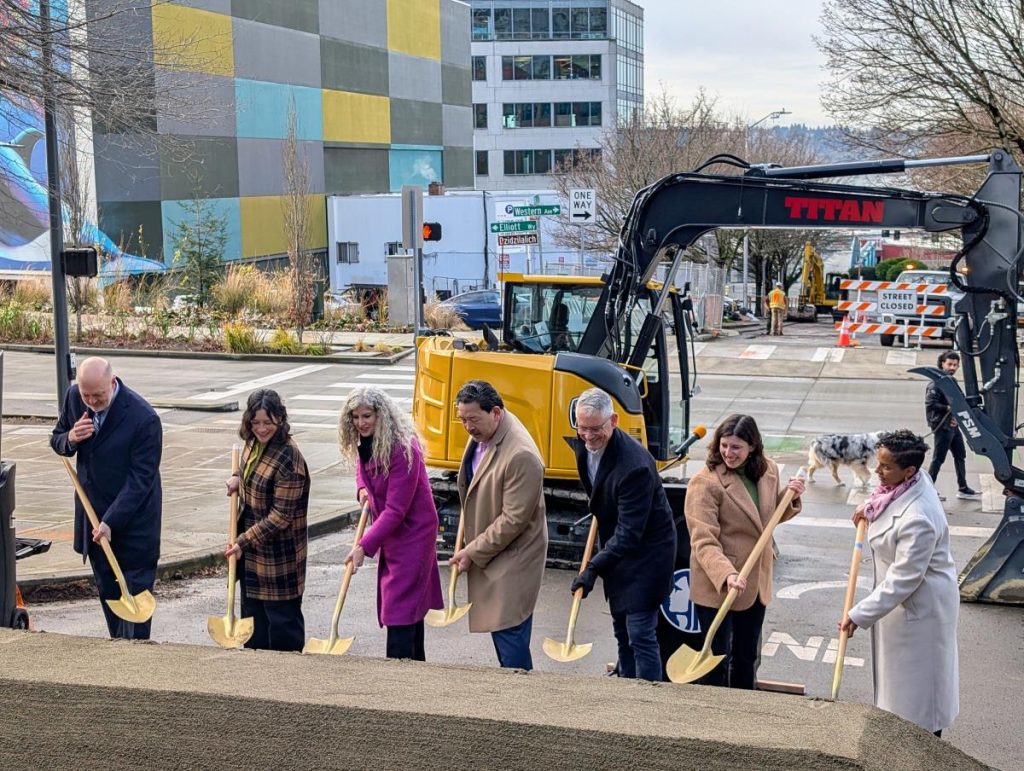
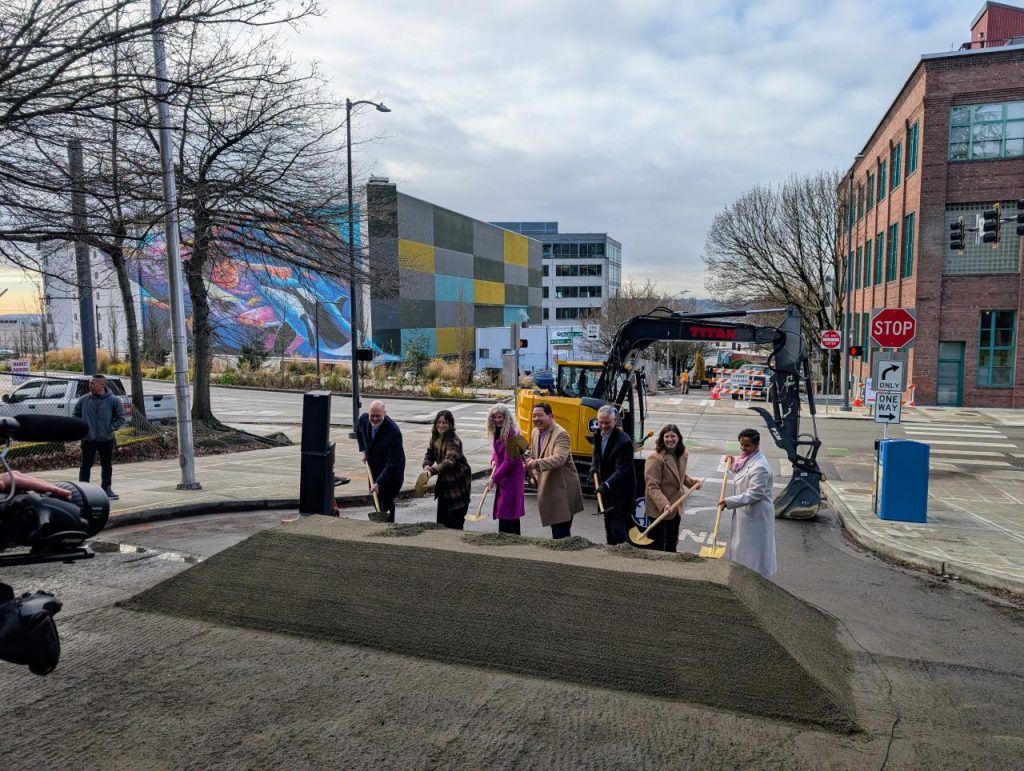
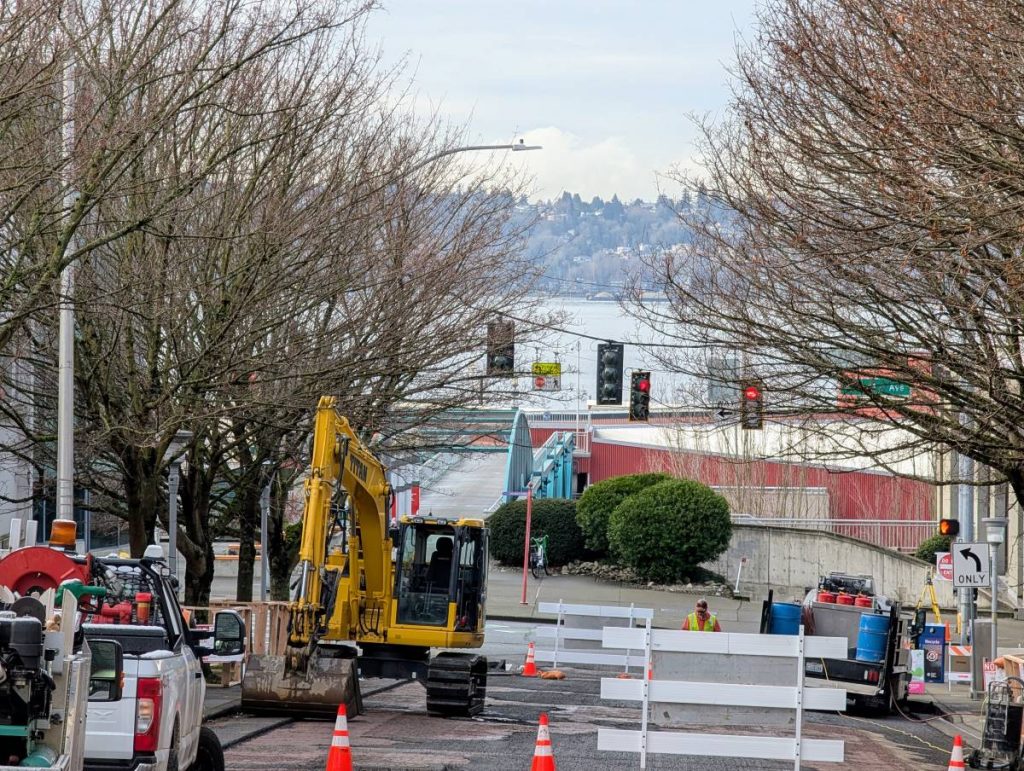
The program Tuesday include one of the park advocates: Tom Graff, a top real estate executive who chairs the board of Belltown United, a group focused on neighborhood beautification and improvements. Even if park advocates get their way, they’re not envisioning a grand opening of the park until 2030, although Kettle did tell The Urbanist he had hopes of moving up that timeline, if feasible. Belltown United’s vision is ambitious — an elaborate garden with extensive tree plantings sprouting from the former highway portal, and formal steps replacing the currently sloping lawn in the group’s sample illustration. They do plan intermittent activation to use the space in the interim, such as during the FIFA World Cup.
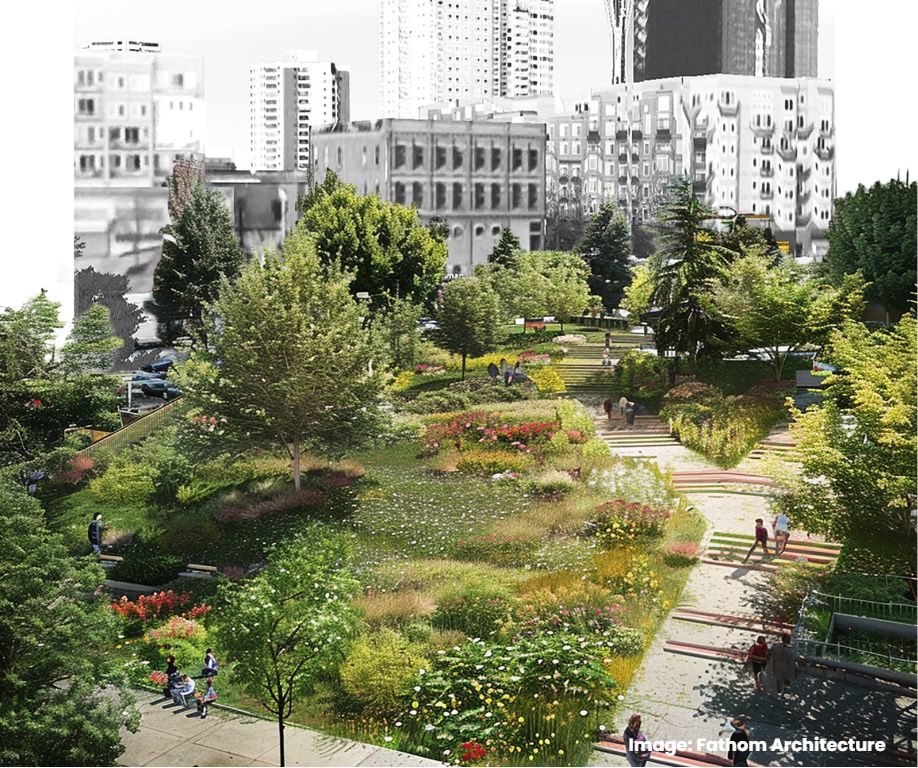
Meanwhile, the two-block Bell Street upgrade is expected to be completed by summer 2025.
Waterfront Park transportation upgrades will include a protected bike lane on Alaskan Way, but completion of that facility has been delayed despite hopes of opening it last year.
Both Kettle and Harrell expressed hopes that the projects could be an economic stimulus for Belltown.
“The new and improved pedestrian and bicycle connections between Belltown and the waterfront are crucial to increasing foot-traffic, providing benefits for community members and local businesses, and creating safer routes for cyclists traveling throughout downtown,” Harrell said. “These improvements reflect the community’s vision of what Belltown wants and needs. We are one step closer to realizing our vision of our waterfront and a stronger downtown.”
The extra step would be more pedestrianization on the waterfront, as polls and public outreach have repeatedly found popular.
Doug Trumm is publisher of The Urbanist. An Urbanist writer since 2015, he dreams of pedestrian streets, bus lanes, and a mass-timber building spree to end our housing crisis. He graduated from the Evans School of Public Policy and Governance at the University of Washington in 2019. He lives in Seattle's Fremont neighborhood and loves to explore the city by foot and by bike.


